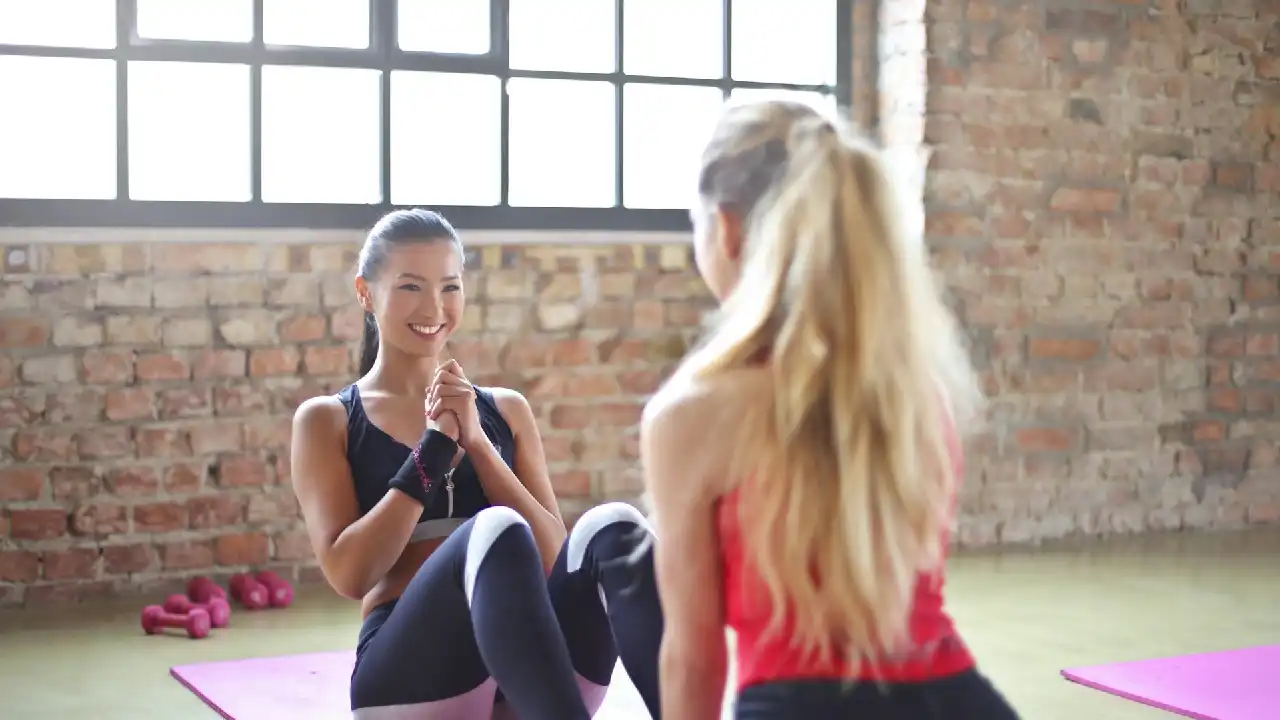HEALTH
Beginners Guide to Getting Fit: 6 Tips to Get You Started

Personal fitness is vital for maintaining a healthy and balanced lifestyle. It promotes overall well-being in your physical body as well as in your mental and emotional health. Yet so many people struggle to incorporate fitness into their daily routine.
Looking for a gym with personal trainer sessions is one approach that many people try to solve this challenge. But it’s only one of many options. This article will show you that there is always hope as long as you are willing to try.
1. Set Realistic Goals
Whether you are just starting out, or trying to get back into a fitness routine, it is important to set goals that are realistic for where you’re at in your fitness journey. Research has shown that frequency is more important than intensity — therefore your first priority should be to establish the habit of regular exercise.
One approach is to start with two or three 20-minute sessions a week that you write into your calendar and treat like a proper appointment. If you find 20 minutes are too much, do 10 minutes; the important thing is to show up every time.
2. Start Slowly and Gradually Increase Intensity
As a beginner, it is important to start slowly to avoid injuries and gain confidence. Pushing too hard from the start can be harmful to your body and lead to burnout. First build your strength and endurance, then you can start to increase the intensity of your workouts.
Don’t get discouraged when you don’t see immediate change. Rather focus on developing a sustainable exercise regime that you can maintain for the long haul.
Once you’re ready, you can level up by adding weights to your strength training routine or increasing the duration of your cardio workouts. Another idea is to switch things up by trying more advanced exercises. This keeps it interesting!
3. The Importance of Warm-Up and Cool-Down
Warm-up and cool-down play essential roles in preventing injuries and making your workout sessions more effective.
Warm-up exercises are especially vital for beginners. They help loosen up the muscles, making them more flexible and less prone to strains. Jogging in place, jumping jacks, and arm circles are all common warm-up exercises.
The cool-down phase is equally important. After an intense workout, it is essential to gradually bring the body back to its resting state. Low-intensity movements like walking, stretching, or gentle yoga poses will reduce muscle soreness and help your body recover faster from the aches that usually follow vigorous exercise.
4. Mix Cardio and Strength Training
Mixing cardio and strength training can help you get fit faster while keeping things interesting. Both are important for overall wellness, so by combining them in your routine, you can maximise your fitness gains.
Cardio (short for cardiovascular) just means things that are related to the heart and blood vessels and refers to exercises that get your heart rate up, boost mood and energy levels, and burn calories. It can also aid in weight loss when coupled with a healthy eating plan. Examples of cardio exercises are cycling, running, skipping, and dancing.
5. Add Stretching Exercises for Flexibility
Stretching can easily be overlooked when creating a fitness routine, yet it plays a vital role in preventing muscle imbalance, maintaining proper posture, and making sure your body can manage its full range of motion. It also helps to reduce sprains and muscle tears.
Stretching can be worked into your training program as part of the warm-up and cool-down phases. For warming up, it’s best to use dynamic stretches. These involve moving parts of the body through a full range of motion, like leg swings, arm circles, and walking lunges.
On the other hand, for the cooling down phase static stretches are better. This is where you hold a position for a prolonged period, typically focusing on a specific muscle group like the shoulders or hamstrings. This allows the muscles to relax and elongate, and helps improve flexibility over time.
6. Make It Social
If you know you need to exercise but still can’t muster up the motivation, this tip is especially helpful. Adding other people to your exercise programme can be a very powerful motivator. It creates accountability and provides opportunities for building relationships with all the benefits that go with it. In the end, getting fit becomes a bonus.
Here are some suggestions for how to blend exercise with the fun of social interactions:
- Join a soccer or netball club.
- Participate in weekly Park Runs.
- Zumba classes are great if you enjoy dancing.
- Check your local gym’s offerings: spin classes, yoga classes, and targeted fitness classes are all fun ways to get yourself off the couch.
- Schedule weekly hikes with a friend or group.
- Get a personal trainer to keep you accountable, but also make exercising feel more social.
In Summary
Getting fit fast isn’t as important as staying healthy. It’s easy to get caught up in the desire to get fit and see quick results, but it’s crucial to prioritise your long-term health over short-term gains. Getting fit is a journey, not a destination. Remember that progress takes time, and it will require consistency and patience. You’ve got this.
Kenneth is a proud native of sydney, born and raised there. However, he pursued his education abroad and studied in Australia. Kenneth has worked as a journalist for almost a decade, making valuable contributions to prominent publications such as Yahoo News and The Verge. Currently, he serves as a journalist for The Hear Up, where he focuses on covering climate and science news. You can reach Kenneth at [email protected].










